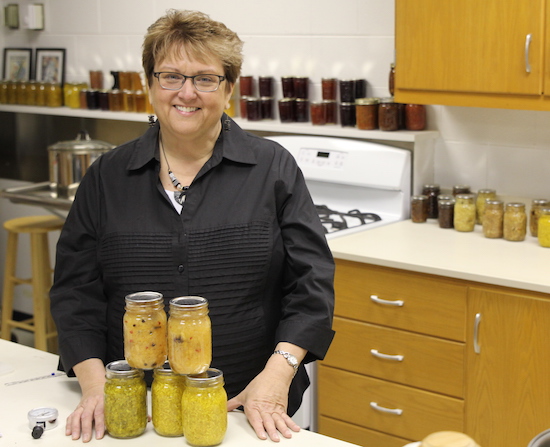Kimchi is a traditional Korean dish typically made from napa cabbage (also known as Chinese or winter cabbage) and mixed with various ingredients such as carrots, onions, green onions, radish, ginger, garlic, fish sauce, and gochugaru. Gochugaru is a type of Korean red chili pepper powder that gives kimchi its signature heat and vibrant red color.
The earliest form of kimchi emerged during Korea’s Three Kingdoms period (57 B.C.E.–668 C.E.), and was characterized by the simple salting of vegetables (Surya & Nugroho, 2023). This basic method of food preservation was commonly used to prepare side dishes during that era. Over time, the dish has evolved into a wide range of regional styles and flavor profiles, becoming one of the best-known fermented foods worldwide.
Though rooted in centuries-old Korean tradition, kimchi has experienced a remarkable rise in popularity across the United States and around the world in recent years. Once found primarily in Korean restaurants or specialty markets, kimchi now appears on mainstream grocery store shelves and in an increasing number of home kitchens. Much of its appeal stems from its bold, spicy flavor, satisfying crunch, and growing reputation as a probiotic-rich food that may support gut health. With a flavor profile that ranges from bright and tangy to richly fermented and complex, kimchi has carved out a place in the health-conscious and culinary communities.
As American consumers explore more international flavors and preparations, there has been a noticeable increase in the demand for culturally rooted, nutrient-rich options like kimchi. This trend reflects a broader shift toward embracing global culinary traditions within everyday meals. Recent studies have found that most American consumers favor the authentic taste of kimchi, whether it is homemade or store-bought, highlighting its growing popularity across diverse households (Jang et al., 2016).
Why Do People Eat Kimchi?
The growing interest in fermented foods like kimchi is fueled by their potential health benefits, which are supported by emerging research. During kimchi fermentation, lactic acid bacteria break down sugars in the cabbage and other carbohydrate-containing ingredients, producing lactic acid and a variety of metabolites. These metabolites include vitamins, antioxidants, and compounds that may help reduce inflammation or support immune function (Chang et al., 2010; Cheigh et al., 2009; Park et al., 2014).
What truly makes kimchi unique is its rich microbial diversity. Unlike foods fermented with a single species of bacteria or yeast, kimchi is a naturally complex ecosystem. As fermentation progresses, different bacteria take turns dominating the environment, creating a dynamic microbial community that contributes to the food’s flavor, safety, and potential health effects.
The Good Microbes in Kimchi
When kimchi is made, the good bacteria get to work. These good bacteria are called lactic acid bacteria, and they are a big reason why kimchi is both safe to eat and full of flavor. They grow well in salty, low-oxygen environments—just like the conditions inside a jar of kimchi.
In the early stages of fermentation, these good bacteria start breaking down the sugars in the cabbage and other vegetables. As they do this, they make acids and gases that give kimchi its sour taste and help keep it safe by stopping harmful bacteria from growing. As time goes on and the mixture becomes more acidic, other types of good bacteria take over and continue to ferment the kimchi, making it even safer and tastier.
The way kimchi ferments depends on several things: the ingredients used, how much salt is added, its temperature during fermentation, and the fermentation period. Research has found that fermentation time and salt concentration work together to ensure the safety of kimchi.
Salt is especially important as appropriate salt concentrations help prevent the growth of bad bacteria during the early stages of fermentation, giving the good ones a chance to take over. Adequate fermentation time allows for the development of beneficial lactic acid bacteria that lower the pH to safe levels, making the kimchi acidic enough to keep it safe to eat (Han, 2020; Inatsu et al., 2004; Kim et al., 2021; Yang et al., 2018; Yu et al., 2019). This combination creates an environment that is inhospitable for harmful bacteria, thereby enhancing the safety of the final product.
The Good Nutrition in Kimchi
Kimchi is a low-calorie, nutrient-dense food that provides an array of essential vitamins, minerals, and dietary fiber. According to the U.S. Department of Agriculture, 100 g of kimchi provides 15 kilocalories, contains about 1.1 g of protein, 2.4 g of carbohydrates (including 1.6 g of dietary fiber and 1.06 g of sugars), and 0.5 g of total fat, with no cholesterol (Agricultural Research Service, 2024).
Kimchi is relatively high in sodium (498 mg per 100 g), which plays a critical role not only in its flavor but also in the fermentation process and microbial safety. Maintaining the recommended salt concentration specified in recipes is essential, as it helps inhibit the growth of undesirable or disease-causing (pathogenic) microorganisms during fermentation.
While kimchi contributes important micronutrients, such as 2.5 mg of iron, 33 mg of calcium, 151 mg of potassium, 52 µg of folate, and 43.6 µg of vitamin K (Agricultural Research Service, 2024), individuals who are advised to follow a low-sodium diet should consume it in moderation or consult a healthcare professional before including it regularly in their diet. It’s important to balance kimchi’s nutritional benefits with your dietary needs and food-safety considerations.
Beyond its basic nutrients, kimchi undergoes a fermentation process that may enhance its health benefits. Research on animal models shows that kimchi’s fiber content, mostly insoluble, also supports digestive health and may contribute to reduced risk of chronic diseases, such as obesity and cardiovascular disease (Korus et al., 2021; Lee et al., 2024).
Fermentation increases the ability of our bodies to access (bioavailability) the antioxidants, organic acids, and functional metabolites—such as γ-aminobutyric acid (GABA) and exopolysaccharides—that may help reduce inflammation and improve cholesterol levels and gut health (Kim et al., 2023). Additionally, the presence of lactic acid bacteria not only preserves the food but also provides probiotic effects, supporting the balance of our gut microbiota.
Kimchi stands out among vegetable-based foods because it provides both prebiotic fibers and probiotic microbes, offering combined support for immune and gastrointestinal health (Cha et al., 2024). While the limited research data is promising, it is important to note that much of the current evidence comes from in vitro or animal-model studies. More clinical trials are needed to better understand the health benefits of kimchi consumption (Han et al., 2020; Song et al., 2023; Yang et al., 2018; Yu et al., 2019).
Safe Kimchi Starts in a Clean Kitchen
When making fermented foods at home, good hygiene is the first line of defense against foodborne illnesses. Always start by washing your hands with soap and warm water for at least 20 seconds before handling any ingredients. Wash the cabbage and other vegetables under running water to remove dirt and surface bacteria.
Clean and sanitize all knives, cutting boards, bowls, and jars before use. To sanitize your equipment, wash it with soap and warm water, then submerge it in hot water that is at least 160 °F for at least 30 seconds. This helps remove harmful microbes that could interfere with fermentation or cause illness.
Keeping the workspace clean, using fresh vegetables, and following a science-backed recipe helps ensure that the final product is safe to eat.
Start Making Your Own Kimchi
After the cabbage is cleaned, rub it with salt and allow it to rest, massaging it every 30 min for 2 hr. This process draws water out of the cabbage and creates the salty brine needed for fermentation.
Once the seasoning mixture and vegetables are added, the mixture is packed tightly into jars, minimizing air pockets. The jars should then be loosely covered and left at room temperature for the first 48 hr. This kickstarts fermentation, giving the lactic acid bacteria time to grow and start producing acid.
Stages of Fermentation
After the early fermentation phase at room temperature, it is essential to transfer kimchi to the refrigerator to ensure both flavor development and safety. Refrigeration slows down the fermentation process, allowing flavors to mature gradually while also suppressing the growth of harmful microorganisms. During the early stages of fermentation, the pH may not yet be low (acidic) enough to prevent the proliferation of certain pathogens. Maintaining a storage temperature of 41 °F or below helps ensure both the safety and quality of the final product (Snyder et al., 2020).
During the early stages of kimchi fermentation, typically within the first 1 to 2 days at room temperature, visible bubbling may occur as the lactic acid bacteria metabolize sugars, which produces carbon dioxide. By days 5 to 7, the kimchi develops a tangier flavor, a more pronounced aroma, and a softer texture. After approximately 2 weeks, the fermentation process leads to a sufficiently acidic environment—a pH below 4.6—that inhibits the growth of most foodborne pathogens.
Spoilage
Signs of spoilage include the presence of mold, an off-putting odor distinct from its characteristic fermented aroma, or an unusual texture. These indicators may suggest that the fermentation environment has been compromised.
While not all spoilage microorganisms are harmful, their presence often signals that conditions like temperature or pH have shifted in a way that could support the growth of harmful microorganisms. For this reason, spoilage should not be viewed as just a quality issue—it can also pose a serious food-safety risk. If any of these signs are observed, discard the kimchi to prevent potential foodborne illness.
Be Aware of Allergens
When preparing kimchi at home, it is important to be aware of potential food allergens that may be present in different recipes. Food allergens are specific proteins found in certain foods that can trigger an immune response in allergic people. For individuals with food allergies, even a small amount of the allergen can cause symptoms ranging from mild (such as itching or hives) to severe and potentially life-threatening (such as anaphylaxis). Because of the risks involved, it’s important to recognize and avoid ingredients that may cause allergic reactions.
The U.S. Food and Drug Administration identifies nine major allergens: milk, eggs, fish, shellfish, tree nuts, peanuts, wheat, soybeans, and sesame (Food Safety and Inspection Service, n.d.). Although traditional kimchi is primarily vegetable-based, many recipes include ingredients that fall under the allergen categories. For example, fish sauce, shrimp paste, or salted anchovies are often used to enhance flavor, but may concern individuals with fish or shellfish allergies. Sesame oil is sometimes added, particularly in fusion or new modified versions of kimchi, and may trigger reactions in those with sesame allergies.
Some nontraditional recipes may also include soy sauce (which can contain soy and wheat) or nut-based ingredients. Because of these variations, it is essential to thoroughly review recipes before making kimchi at home, especially if someone living in your home has food allergies.
Smart Fermentation Starts (and Ends) with Safety
If prepared safely, homemade kimchi can be a flavorful, nutritious, and rewarding addition to your diet. As kimchi grows more popular, home food preservers must understand the science behind its safe preparation. Key factors such as ingredient selection, salt concentration, fermentation time, and refrigerated storage all play essential roles in achieving a final product that is not only delicious but also microbiologically safe.
To reduce the risk of foodborne illness, use validated recipes that follow science-based guidelines. These recipes are developed to ensure that lactic acid bacteria have the right environment to grow, effectively lowering the pH and preventing the growth of harmful pathogens.
Combining traditional techniques with modern food safety knowledge allows home fermenters to enjoy kimchi confidently, while honoring both cultural practices and public health.
Happy fermenting!
References
Agricultural Research Service. (2024). Kimchi. U.S. Department of Agriculture. Retrieved July 2, 2025, from https://fdc.nal.usda.gov/food-details/2710077/nutrients
Cha, J., Kim,Y. B., Park, S.-E., Lee, S. H., Roh, S. W., Son, H.-S., & Whon, T. W. (2024). Does kimchi deserve the status of a probiotic food? Critical Reviews in Food Science and Nutrition, 64(19), 6512–6525. https://doi.org/10.1080/10408398.2023.2170319
Chang, J.‐H., Shim, Y. Y., Cha, S.‐K., & Chee, K. M. (2010). Probiotic characteristics of lactic acid bacteria isolated from kimchi. Journal of Applied Microbiology, 109(1), 220–230. https://doi.org/10.1111/j.1365-2672.2009.04648.x
Cheigh, H., Park, K., & Lee, C. Y. (2009). Biochemical, microbiological, and nutritional aspects of kimchi (Korean fermented vegetable products). Critical Reviews in Food Science and Nutrition, 34(2), 175–203. https://doi.org/10.1080/10408399409527656
Cho, J., Lee, D., Yang, C., Jeon, J., Kim, J., & Han, H. (2006). Microbial population dynamics of kimchi, a fermented cabbage product. FEMS Microbiology Letters, 257(2), 262–267. https://doi.org/10.1111/j.1574-6968.2006.00186.x
Food Safety and Inspection Service. (n.d.). Food Allergies: The “Big 9.” U.S. Department of Agriculture. Retrieved June 22, 2025, from https://www.fsis.usda.gov/food-safety/safe-food-handling-and-preparation/food-safety-basics/food-allergies-big-9
Han, K. J., Lee, J.-E., Lee, N.-K., & Paik, H.-D. (2020). Antioxidant and anti-inflammatory effect of probiotic Lactobacillus plantarum KU15149 derived from Korean homemade diced-radish kimchi. Journal of Microbiology and Biotechnology, 30(4), 591–598. https://doi.org/10.4014/jmb.2002.02052
Inatsu, Y., Bari, M. L., Kawasaki, S., & Isshiki, K. (2004). Survival of Escherichia coli O157:H7, Salmonella enteritidis, Staphylococcus aureus, and Listeria monocytogenes in kimchi. J Food Prot, 67(7), 1497–1500. https://doi.org/10.4315/0362-028X-67.7.1497
Jang, S., Kim, M., Lim, J., & Hong, J. (2016). Cross‐cultural comparison of consumer acceptability of kimchi with different degree of fermentation. Journal of Sensory Studies, 31(2), 124–134. https://doi.org/10.1111/joss.12198
Kim, H. J., Kwon, M. S., Hwang, H., Choi, H.-S., Lee, W., Choi, S.-P., Jo, H., & Hong, S. W. (2023). A review of the health benefits of kimchi functional compounds and metabolites. Microbiology and Biotechnology Letters, 51(4), 353–373. https://doi.org/10.48022/mbl.2310.10011
Kim, J.-Y., Bae, Y.-M., & Lee, S.-Y. (2021). Combined effect of various salt concentrations and lactic acid bacteria fermentation on the survival of Escherichia coli O157:H7 and Listeria monocytogenes in white kimchi at different temperatures. Food Sci Biotechnol, 30, 1593–1600. https://doi.org/10.1007/s10068-021-00979-9
Korus, A., Bernaś, E., & Korus, J. (2021). Health-promoting constituents and selected quality parameters of different types of kimchi: Fermented plant products. Int J Food Sci, 2021, 9925344. https://doi.org/10.1155/2021/9925344
Lee, W., Kwon, M.-S., Yun, Y.-R., Choi, H., Jung, M.-J., Hwang, H., Shin, M.-J., Park, J.-H., Kim, D.-R., Chang, J. Y., Moon, S. Y., Lee, H. J., Kim, T.-W., Whon, T. W., & Hong, S. W. (2024). Effects of kimchi consumption on body fat and intestinal microbiota in overweight participants: A randomized, double-blind, placebo-controlled, single-center clinical trial. Journal of Functional Foods, 121, 106401. https://doi.org/10.1016/j.jff.2024.106401
Park, K.-Y., Jeong, J.-K., Lee, Y.-E., & Daily, J. W., III. (2014). Health benefits of kimchi (Korean fermented vegetables) as a probiotic food. Journal of Medicinal Food, 17(1), 6–20. https://doi.org/10.1089/jmf.2013.3083
Snyder, A., Breidt, F., Andress, E. L., & Ingham, B. H. (2020). Manufacture of traditionally fermented vegetable products: Best practice for small businesses and retail food establishments. Food Protection Trends, 40(4), 251–263. https://www.foodprotection.org/publications/food-protection-trends/archive/2020-07-manufacture-of-traditionally-fermented-vegetable-products-best-practice-for-small-businesses/
Song, E., Ang, L., Lee, H. W., Kim, M.-S., Kim, Y. J., Jang, D., & Lee, M. S. (2023). Effects of kimchi on human health: A scoping review of randomized controlled trials. J. Ethn. Food, 10, article 7. https://doi.org/10.1186/s42779-023-00173-8
Surya, R., & Nugroho, D. (2023). Kimchi throughout millennia: A narrative review on the early and modern history of kimchi. Journal of Ethnic Foods, 10, article 5. https://doi.org/10.1186/s42779-023-00171-w
Yang, S.-J., Lee, J.-E., Lim, S.-M., Kim, Y.-J., Lee, N.-K., & Paik, H.-D. (2018). Antioxidant and immune-enhancing effects of probiotic Lactobacillus plantarum 200655 isolated from kimchi. Food Sci Biotechnol, 28, 491–499. https://doi.org/10.1007/s10068-018-0473-3
Yu, H.-S., Lee, N.-K., Choi, A.-J., Choe, J.-S., Bae, C. H., & Paik, H.-D. (2019). Anti-inflammatory potential of probiotic strain Weissella cibaria JW15 isolated from kimchi through regulation of NF-κB and MAPKs pathways in LPS-induced RAW 264.7 cells. Journal of Microbiology and Biotechnology, 29(7), 1022–1032. https://doi.org/10.4014/jmb.1903.03014









